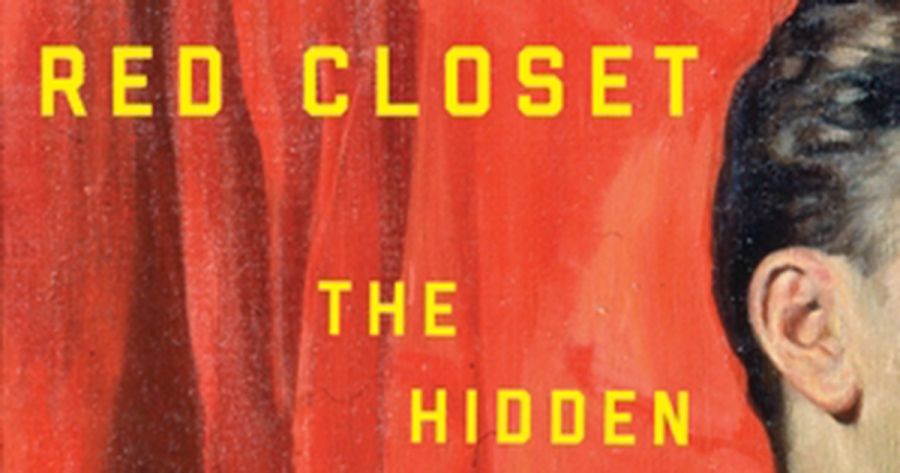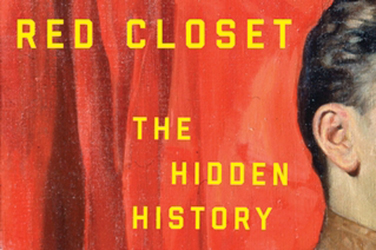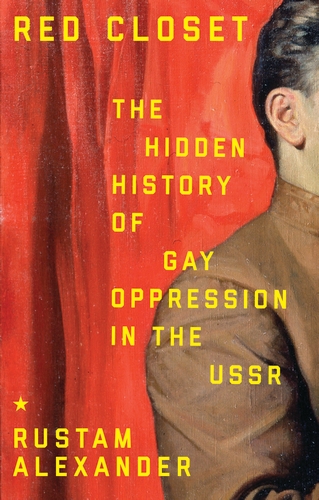
- Free Article: No
- Contents Category: History
- Review Article: Yes
- Article Title: Sex and punishment
- Article Subtitle: A history of homosexuality in the USSR
- Online Only: No
- Custom Highlight Text:
In July 1986, at the onset of the Glasnost era, a program featuring a discussion between American and Soviet women on a range of contemporary issues was broadcast on Soviet television. Reflecting on the prevalence of sex in US popular culture, an American participant asked her Soviet collocutors whether this was also the case in their country. The response was curt: ‘There is no sex in the USSR.’
- Featured Image (400px * 250px):

- Alt Tag (Featured Image): Iva Glisic reviews 'Red Closet: The hidden history of gay oppression in the USSR' by Rustam Alexander
- Book 1 Title: Red Closet
- Book 1 Subtitle: The hidden history of gay oppression in the USSR
- Book 1 Biblio: Manchester University Press, £17.99 hb, 273 pp
- Book 1 Cover Small (400 x 600):

- Book 1 Cover (800 x 1200):

Organised as a series of short chapters covering the individual stories of Soviet gay men and lesbians, Red Closet successively spans the history of the country under the leadership of Joseph Stalin, Nikita Khrushchev, Leonid Brezhnev, and Mikhail Gorbachev. The stories within each of these four chronological sections are drawn from a selection of archival and published sources, including diaries, autobiographies, medical reports, court cases, and Soviet medical and legal dissertations. Emphasis is predominantly placed on the stories of gay men due to the nature of available sources: female homosexuality was not criminalised under Soviet law, and thus historical records on the subject are rare and elusive. While Alexander does not elaborate on why this was the case, other scholars have suggested that female homosexuality was not regarded as an expression of bourgeois decadence or a threat to national dignity, and was accordingly regarded by officials as ‘either a non-issue or something that doctors had to take charge of’.
Red Closet opens by providing the reader with insight into a range of gay experiences in the Soviet Union between the 1930s and 1950s – from those of ordinary citizens, to Soviet celebrities, foreign visitors, and officers of the secret service who used their power and privilege to pursue homosexual encounters. Alexander’s focus on individual stories certainly delivers a unique and engaging insight into the lived experience of gay men in the early Soviet period. The focus on micronarrative does, however, put something of a gloss on historical context, and readers who are unfamiliar with Soviet history may struggle to comprehend the different political, legal, and medical trends that informed the official approach to (male) homosexuality and its criminalisation under Stalin.
The occasional casual treatment of phenomena such as the evolution of Soviet ideology is also problematic. Alexander, for example, resurrects the notion of the ‘brainwashed’ Soviet subject, which scholars have long dismissed as a remnant of Cold War discourse. More engagement with the mechanisms of Soviet ideology would have helped to clarify how the study of homosexuality in the Soviet Union was able to continue, despite the fact that relevant medical research in this area had been banned by officials.
Where Alexander’s selection of stories – which are often moving, and at times confronting – is particularly successful is in revealing how Soviet discussions of homosexuality reflected the dominant political concerns of their time. Indeed, during the Stalinist years, Bolshevik leaders regarded male homosexuality as a form of ‘Western infiltration’ devised to corrupt Soviet youth and steal military secrets, and as such it was often condemned as part of a wider campaign against foreign enemies. Under Khrushchev, as selected accounts suggest, homosexuality was frequently cited in the context of contemporary efforts to manage socially undesirable behaviour among the Gulag population. The mass release of Gulag prisoners conducted as part of Khrushchev’s political reforms triggered grave concerns that, among other issues, the same-sex relations that were often observed in the camps would spread into the general population. Alexander’s selection of stories in this section traces a compelling history of homosexual experiences in this period, interweaving accounts from gay men and lesbians, medical professionals, and legal experts.
Brief notes on contemporary developments pertaining to the treatment of homosexuality in the West – including in Germany, the United States, and Australia – accompany each section of the book and help to position the Soviet experience against international trends. The selection of personal accounts of gay men during the Brezhnev era, for example, provides a picture that stands in sharp contrast to developments abroad, where voices in support of gay rights were growing ever louder. Echoing the earlier experiences of their compatriots, Soviet gay men in the 1970s and 1980s often struggled to acknowledge their homosexual desires, with many entering into heterosexual relationships to secure social approval, and suffering brutal punishment when authorities discovered their homosexuality.
Red Closet closes with a series of chapters concerning Gorbachev’s Glasnost and Perestroika, foregrounding accounts that bring to light Soviet approaches to the emergence and global spread of HIV/AIDS. Here, individual stories of Soviet patients, as well as those of doctors and journalists who tried to raise awareness about the new virus, reveal the bravery that was absent from political leaders, who instead engaged in denialism and conspiracy theories.
Following the collapse of the Soviet Union, male homosexuality was decriminalised in Russia as part of a suite of legal reforms. Yet LGBTQ activists and sympathisers throughout the country continue to be subjected to persecution, homophobia, and indeed violence. Activism in Russia, however, is not easily extinguished – and neither is history writing that challenges official narratives. Although it has been banned in Russia, Red Closet stands within a long tradition of historical enquiry that defies a politics of silence and erasure. Importantly, it provides new insight into the history of gay lives in the USSR, and will be valued by scholars, activists, and general readers alike.


Comments powered by CComment